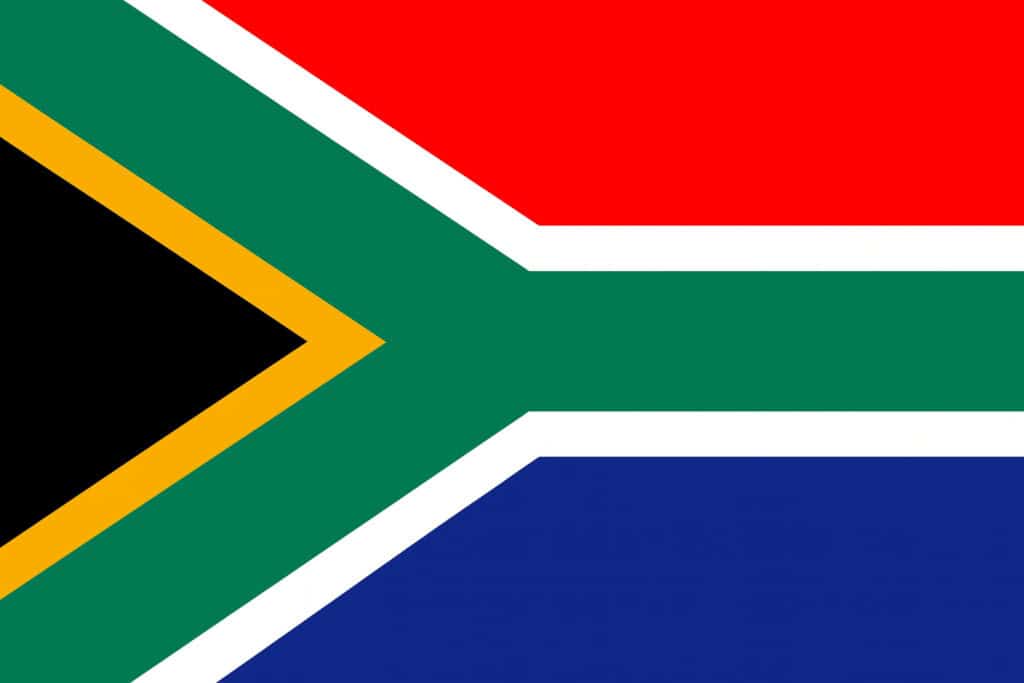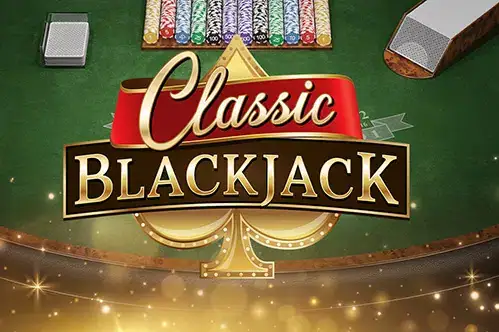How to Play Blackjack
Online in South Africa
Here’s a short video explaining how blackjack works for beginners. It’s shared from YouTube for educational purposes.
Where to Play Blackjack
Online in South Africa
Any South African betting site that features these well-known casino game providers will usually have live dealer blackjack tables available. Simply choose the game provider you’re interested in, and you’ll be taken to their profile page where you can explore their blackjack offerings and see which local betting sites host their games.
In South Africa, online blackjack is almost always played in live dealer rooms. When you join a game, you see a real dealer on your screen dealing real cards from a real table, just like in a casino. You place your bets and make your choices through the online interface, while the action happens live on camera.
You won’t usually find virtual blackjack tables with computer graphics or animated cards on South African sites. Instead, the focus is on live streaming tables that bring the full casino atmosphere straight to your phone or computer. It’s the same game of Twenty-One that players have enjoyed for generations, only now it’s played online with real dealers and real cards in real time.
Learn to Play Blackjack
Blackjack, often referred to as Twenty-One, is one of the most famous casino card games ever created. Its rules are straightforward, the pace is exciting, and there’s plenty of room for skill and smart play. For advanced players who use perfect mathematical strategy and can track cards, the edge can sometimes tilt slightly in their favour.
Even for beginners who play sensibly, Blackjack remains one of the fairest games in any casino. The modern version grew in popularity after World War I, but the game’s history goes back to 18th-century France, where it was called Vingt-et-Un, meaning “21.” Today, Blackjack can be found in almost every casino worldwide.
In casino play, the dealer always represents the house, standing while managing all aspects of the game from shuffling to payouts. In home games, players usually take turns being the dealer, which changes the dynamic but keeps the same spirit of competition alive.
What You Play With
Blackjack uses the familiar 52-card deck, although most casinos combine multiple decks to make card counting difficult. Six decks together—312 cards in total—is the standard setup in most casinos. A blank plastic card is placed near the bottom of the shoe to signal when it’s time to reshuffle. When four or more decks are used, the cards are drawn from a dealer’s shoe, a small box that lets the dealer slide cards out one at a time without touching the deck directly.
The Main Goal
The objective in Blackjack is simple: beat the dealer by reaching a total closer to 21 than theirs without exceeding 21. Going over 21 automatically ends your hand in a loss, known as a “bust.”
Understanding Card Values
All number cards count as their face value. Jacks, Queens, and Kings are each worth 10. The ace is unique—it can count as either 1 or 11, depending on which total benefits the player most. This flexibility gives the ace a special strategic role in the game.
How Bets Are Placed
Before any cards are dealt, players place their chips in front of them in the marked betting space. Each table sets its own minimum and maximum betting limits. Once everyone has placed a bet, the round begins and no further bets can be made until the next hand.
🎁 Claim Your Welcome Betting Bonus Today
Explore our tailored list of the best betting bonuses in South Africa. Find a verified local site to play on and start with extra value right now.
View Bonuses & Play Safely →Mixing and Cutting the Cards
Before each round, the dealer shuffles the decks thoroughly, ensuring the cards are well mixed. A player is then invited to cut the deck by inserting the plastic cut card. The last 60 to 75 cards in the shoe are not used, a rule that helps limit card counting and keeps the game fair for everyone.
How the Cards Are Dealt
Once bets are locked in, each player receives two cards face up, and the dealer gets one card face up and one card face down. This hidden card is known as the “hole card.” In most modern casinos, all cards are dealt face up so players cannot touch them. This speeds up play and prevents confusion.
Older home versions of the game sometimes used face-down hands, but in casinos today, the standard face-up deal is the rule.
When You Hit a Natural
If a player’s first two cards total 21—an ace and a 10-value card—it’s called a “natural” or “blackjack.” When this happens, and the dealer doesn’t also have one, the player is paid one and a half times their wager. If the dealer also has blackjack, the round is a tie, known as a “push,” and the player’s bet is returned.
If the dealer’s face-up card is an ace or a 10, they check their face-down card immediately to see if they also have blackjack. If they do, the round ends right there, and the dealer collects all bets except those that also equal 21.
Deciding How to Play Your Hand
The player seated to the dealer’s left acts first. They can “hit” to take another card or “stand” to keep their total as is. Players can continue hitting until they either reach 21 or go over, which is an automatic loss. Once a player finishes, the next one takes their turn, and the process continues clockwise.
A hand that includes an ace with another card that is not worth 10 is called a “soft hand.” For example, an ace and a six can count as either 7 or 17. The player can choose which value works best. If another card pushes the total over 21, the ace automatically switches from 11 to 1, keeping the hand in play. This flexibility makes soft hands particularly strategic.
How the Dealer Plays
When all players have finished, the dealer reveals their hidden card. The dealer must draw cards until their total reaches at least 17. If they have 16 or less, they must take another card. When they hold an ace, it counts as 11 if that total stays between 17 and 21; otherwise, it counts as 1. The dealer’s actions follow strict house rules with no personal choice, unlike players who can choose freely.
How to Signal Your Move
To request another card, players can tap the table or motion with their fingers. To stand, they wave their hand side to side with the palm facing down. These gestures make it clear to the dealer and help prevent any confusion on camera in live casino settings.
Playing Two Hands from One
When the first two cards have the same value, such as two 9s or two 7s, the player can “split” them into two separate hands. An equal bet is placed on the new hand, and each hand is then played in turn. When splitting aces, only one card is dealt to each, and if a 10-value card follows, it counts as a regular 21, not as a blackjack. Each hand is played independently, and the dealer settles them one at a time.
When to Double Your Bet
If a player’s initial two cards total 9, 10, or 11, they can double their bet for a single extra card. This is known as “doubling down.” The dealer places the new card face down until the end of the round. Doubling down is a strong move when the dealer’s upcard looks weak. With two fives, players may either double down, split, or continue normally, depending on their preference and house rules.
Optional Insurance Bet
When the dealer’s face-up card is an ace, players are offered “insurance.” This side bet can be up to half of the original wager and predicts that the dealer’s hidden card is worth 10. If that’s true, the insurance pays 2 to 1. However, if the dealer doesn’t have blackjack, the insurance bet is lost. While tempting, insurance is generally not a good long-term strategy unless the deck is rich in 10-value cards.
How Rounds Are Settled
Once everyone’s cards are shown, the dealer compares their total with each player’s. If the dealer goes over 21, all players who have not busted automatically win. If the dealer stands, those with a higher total (without exceeding 21) win their bets, while those with lower totals lose. A tie results in no win or loss for either side.
One of the biggest advantages for the house is that players act first. If a player busts before the dealer’s turn, the casino immediately collects their bet, even if the dealer also busts later.
When the Deck Is Recycled
At the end of each round, the dealer gathers all cards and places them aside. When the cut card appears near the end of the shoe, the dealer stops dealing, reshuffles the entire deck, offers a new cut, and continues play. This prevents anyone from tracking which cards remain.
Playing Smart: Basic Blackjack Strategy
Winning at Blackjack isn’t about luck alone—it’s about making the right decisions based on your cards and the dealer’s visible one. When the dealer shows a strong card like a 7, 8, 9, 10, or ace, you should keep drawing until you reach 17 or more. If the dealer’s card is weak, such as 4, 5, or 6, stop hitting once you reach 12 or higher and let the dealer risk going bust. When the dealer shows a 2 or 3, stopping at 13 or higher is generally safest.
With soft hands that include an ace, continue drawing until you reach at least 18. Doubling down is most effective when your total is 11. With a total of 10, it’s wise to double unless the dealer has a 10 or ace showing. With 9, only double when the dealer’s card is between 2 and 6.
For pairs, splitting aces and 8s is always the right move. Never split 10s or 5s, and avoid splitting 4s unless the dealer’s card is weak. Pairs of 2s, 3s, or 7s can be split when the dealer shows a low card, but not against 8s, 9s, or higher. Following these guidelines helps reduce the house edge and keeps the game as close to even as possible.
Blackjack remains one of the few casino games where skill can truly influence the outcome. It combines mathematics, discipline, and instinct, rewarding players who think ahead while still leaving just enough to chance to make every hand exciting.
Responsible Gambling (18+)
Betting and Lotto are for adults only. Play for fun, set limits, and only use money you can afford to lose. If gambling stops being enjoyable or you’re worried about your play, take a break and get support.
You must be 18 or older to gamble in South Africa. If you need help now, call the NRGP on 0800 006 008.
PLAY BLACKJACK ONLINE IN SOUTH AFRICA

At Betline, we genuinely care about helping you stay safe, play responsibly, and bet smart every time you play.
We wrote this guide to help you take your first steps into the world of online blackjack with confidence. Whether you’re learning the basics or practicing your strategy, this is your best starting point for an enjoyable blackjack adventure.
